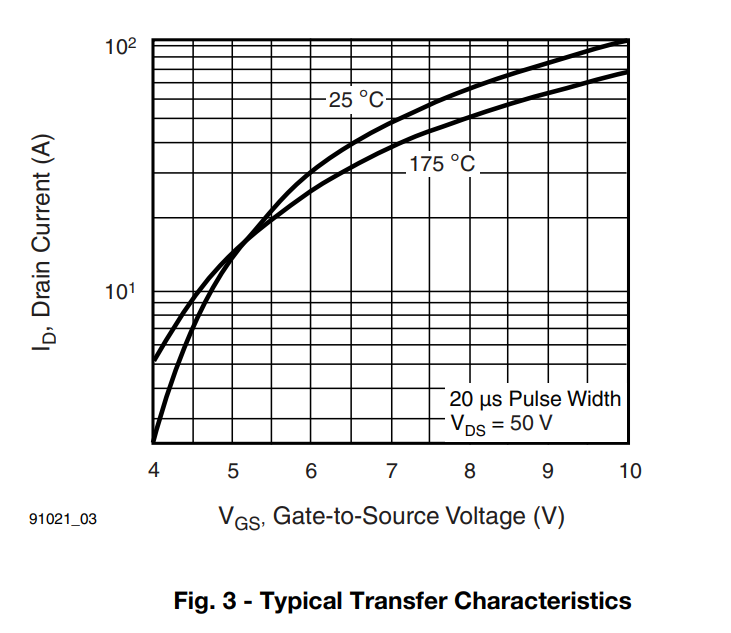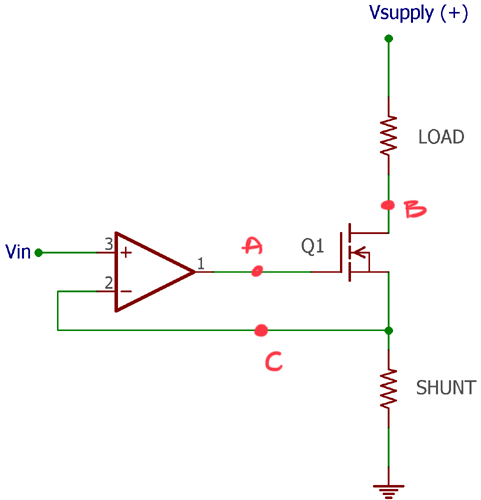You need the MOSFET characteristics. For example, the IRF540 has the following typical characteristics:

So, for example, if your current is 10A the typical Vgs is about 4.75V. You need to add that to the voltage across the shunt to find the output voltage of the op-amp that is required to balance the op-amp.
The op-amp will attempt to drive the gate in order to balance the input voltages. If that is not possible the op-amp output will "rail" near the positive supply voltage of the op-amp for large input voltage (might be a couple volts or more below depending on the type of op-amp).
Similarly for very low input voltages the op-amp can only "rail" near the lower supply voltage. In some cases only within a few volts. If the MOSFET conducts too much with that voltage applied (either due to the non-zero Vgs applied or due to leakage) then it will not be possible for the op-amp to balance.
So to analyze a real circuit you would need both the transistor characteristics (worst-case if you're doing a serious design, 'typical' if you're just trying to make a best guess as to what will happen) and the op-amp characteristics. If you have an ideal op-amp, then only the transistor characteristics matter.


